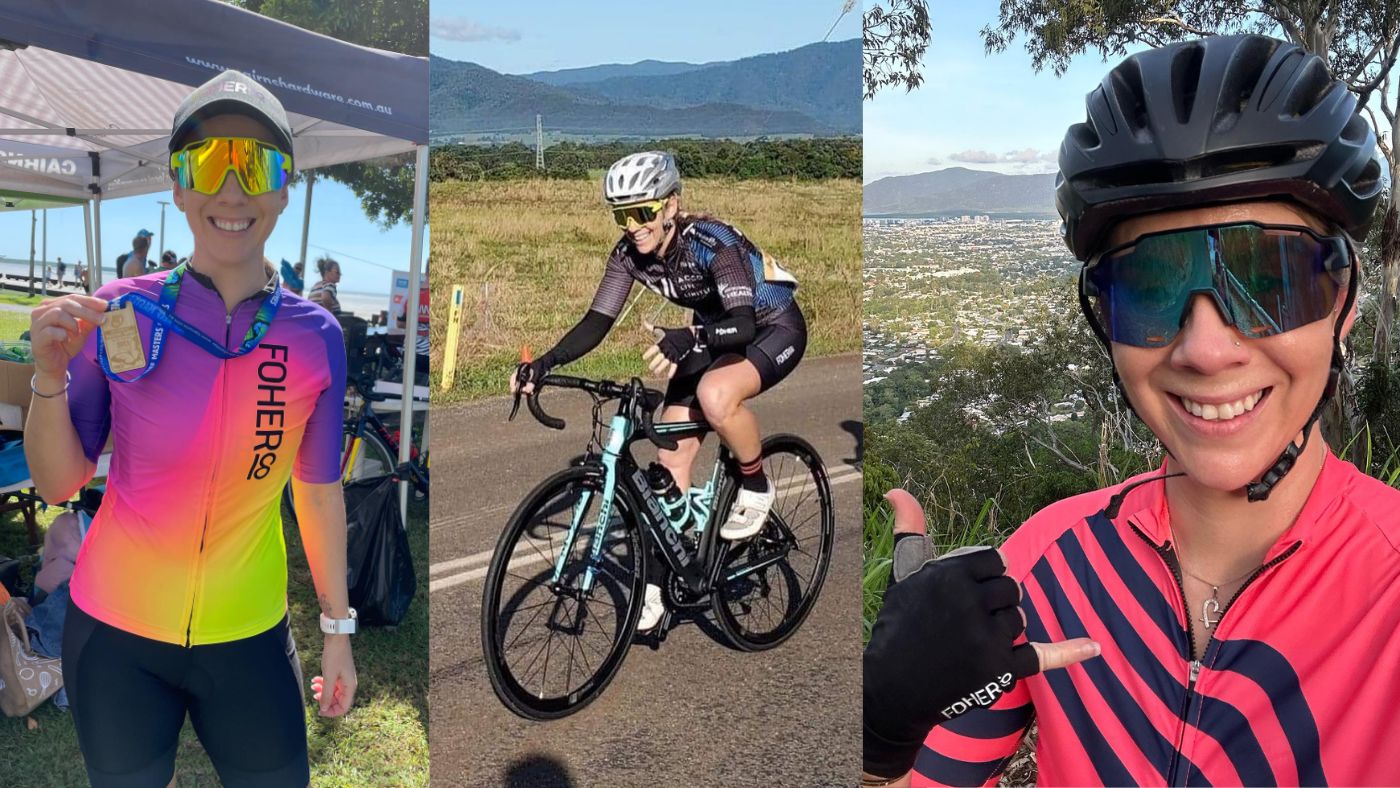It's International Women's Day today and the theme is 'Inspire Inclusion'. Something that has been on our radar for a while now is a disease that is VERY inclusive in that it discriminates against no woman. March is also Endometriosis Awareness Month.
Today, we share a female athlete's very personal journey with endometriosis. In a world where the pain and struggles of conditions like endometriosis are often overlooked and misunderstood, Tara's story stands out as a stark reminder of the realities faced by nearly 1 million Australian women. Diagnosed with deep complex endometriosis (and other gynecological and reproductive conditions) after years of debilitating pain and and misdiagnoses, her experience sheds light on the critical need for awareness, proper and timely diagnosis, and empathetic support for those suffering in silence.
Tara's journey is not just a personal battle; it's a call to action for better understanding and treatment of endometriosis, making endo an everyday conversation topic. We must emphasise the importance of listening to and believing in the pain of others, as we strive for a more inclusive and supportive community. We have certainly been educated and blown away, we hope you can take something from Tara's story too.
x Kylie and the FOHER Team
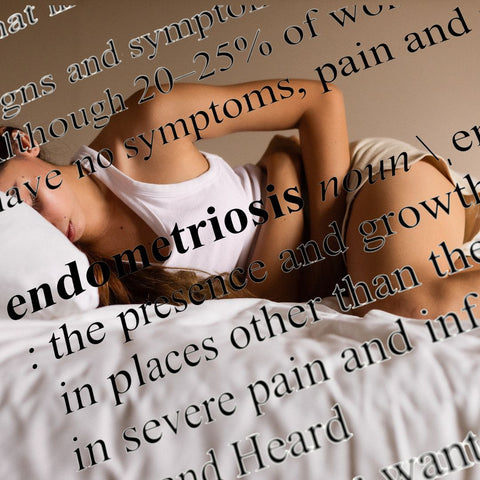
--------------------------------------------------
Hi, I’m Tara and in December 2023 after a roller coaster of a year I was diagnosed with deep complex endometriosis, endometrioma’s, an isthmocele and more than likely adenomyosis.

Pic: Tara and her daughter celebrate finishing a fun run together.
ENDOMETRIOSIS - an estrogen-dependent chronic disease affecting about 10% of reproductive-age women. Pathologically, it is defined by the presence of endometrial tissue grows outside the uterine cavity and is responsible for a chronic inflammatory process causing a range of symptoms, including but not limited to, severe menstrual cramps, chronic pelvic pain, painful sexual intercourse, and infertility. The exact cause of endometriosis is unknown, and its symptoms can vary widely among those affected.
ENDOMETRIOMA - an ovarian cyst formed by endometriosis, where tissue similar to the uterus lining grows outside the uterus, notably on the ovaries. It often leads to symptoms like pelvic pain, painful periods, and can impact fertility.
ISTHMOCELE - also known as a cesarean scar defect, refers to a niche or gap that can form at the site of a cesarean section scar in the uterus. It may be associated with various symptoms including abnormal bleeding (especially postmenstrual bleeding), pelvic pain, and potential fertility issues.
ADENOMYOSIS - where the endometrial tissue, which normally lines the inside of the uterus, grows into the muscular wall of the uterus, known as the myometrium. This growth can cause the uterus to enlarge and lead to painful and heavy menstrual periods. The main symptoms of adenomyosis include severe menstrual cramps, heavy menstrual bleeding, pain during intercourse, and chronic pelvic pain.
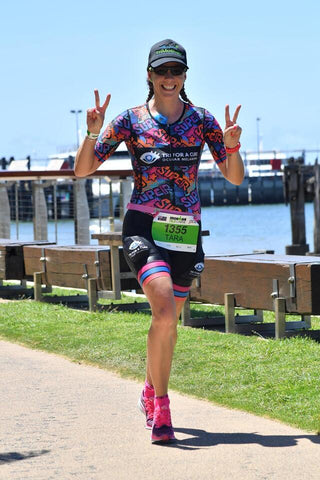
Pic: Tara in her element and racing for her Dad.
This is my story. Looking back to my early teens when I first got my period, it was painful, I remember spending days in bed and Mum taking me to the doctors. The doctors prescribed me what I can only remember as a Sugar Pill which made no difference to my pain. Not too long after I was put on the Pill which saw my period regulate and become bearable. I was able to go back to living life as a teenager.
In my later teens I ended up in hospital with glandular fever and a severe case of tonsilitis. I know right you are probably wondering what this has to do with anything but please bear with me, that will come. In my grade school years I was extremely active and loved being outdoors. I played hockey for most of my life but it wasn’t until I just before I moved back from Darwin that I fell in love with running itself.
Unfortunately having had glandular fever when I was a teen always made things a little more challenging. I found I would constantly get sick if I did too much and would take forever to recover. Once I moved back to Cairns I really found my love for running and in 2017 I signed up for my first half marathon at Airlie Beach. I researched programs and wrote myself one that I thought I could manage. Needless to say I was way undertrained but got it done regardless.
I then went on to find a run coach to get me through a few more before I made the switch to Triathlon in 2018. I completed a number of smaller events before doing my first 70.3 in September 2020.

Pic: Tara finishes her first half ironman in Cairns.
Training for it as a single Mum was no easy feat and it just so happened that my Dad was fighting a rare and very aggressive cancer at this time and I spent many weekends driving backwards and forwards from Cairns to Mackay.
After three years of training 5 days a week, working full time, studying and raising my daughter I decided it was time for a break so after doing the three day Cardiac Challenge ride in 2022 I hung up my boots.
At this point I decided to go off the pill, I had been taking it since I was 15. I was done with it and wanted my body to return to its normal cycle. Little did I know what was going on behind the scenes.
It also just so happened during my time in triathlon that during 2022 I met my partner and our coach raised the idea of him chasing a duathlon world champs spot.
This was the perfect time for me to focus on my family for 2023 and chase my partner around the country side. Fun right?
But my periods became excruciating. I would be walking along and would keel over in pain but just put it down to my body adjusting after being on the pill for most of my life.
After a few months of being unsuccessful with our attempts at falling pregnant we sought help from a fertility specialist. We went through two natural cycles and had two failed IUI attempts before I was deemed as having unexplained infertility.
I continued training when I could and raced a few criterium races in between my period cycles but just wasn’t recovering like I should.

Pic: Tara racing a local criterium with her Cairns Womens Road Racing Team.
With the excruciating pain continuing during this time and not getting any better I questioned it with my specialist and was brushed off on multiple occasions. We would ask questions and raise concerns but just weren’t getting the answers unless we really dug hard for them.
Eventually we went to another specialist who answer our questions before we even asked them, and ordered an Ultrasound. We were immediately referred on for an MRI stating it looked like I had an endometrioma and what is called an isthmocele.
She was straight up front and told me she had read about isthmoceles but had never actually seen one.
At this point I was just happy to have some answers and happy that someone was wanting to investigate. You can imagine the google searching that took place.
When we went back for the results it was honestly like being kicked in the face. My specialist straight up said, I’m really sorry, I don’t know how to tell you this but you actually have deep complex endometriosis as well as endometriomas, your rectum appears to be fused to your uterus, you have an isthmocele and it looks like you also have adenomyosis.
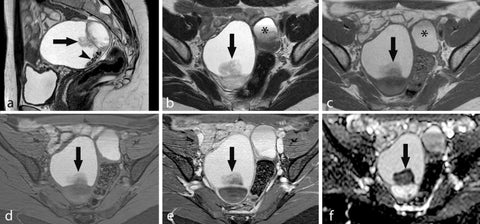
Pic: MRI of ovarian endometriomas (source: Lorusso, F. et al. 2021. Insights Imaging 12, 105)
It’s safe to say I was left spinning and well, completely gutted.
I was referred on to a specialist in Brisbane who has been amazing in talking through everything and we have surgery booked in shortly to remove the endometriosis and endometrioma’s. There is another specialist on standby in case it is also in my bowel, they couldn’t exactly confirm that with the MRI. Down the track I will require a hysterectomy but I'm not ready for that just yet.
Until I was diagnosed I only really knew of endometriosis. I had no idea how common it was, or how complex it was or how many symptoms came along with it, the lack of funding and seemingly lack of knowledge and support from our medical professionals.
The stats are different depending on what website you look up but here are a few:
- Around 1 in 7 women have endometriosis;
- It takes anywhere between 6-12 years to be diagnosed;
- Endometriosis is not just a uterus/pelvic disease, it’s a whole body disease;
- It is way too often misdiagnosed and mistreated;
- Surgery does not cure you from endometriosis, it’s a life long disease;
- Most women have multiple surgeries throughout the course of their life; and
- 90% of women with endo have had glandular fever (hence my reference earlier), past or currently experiencing UTIs, thrush, irritable bowel syndrome or gut-related issues.
- Endometriosis is reported to cost Australian society $9.7 billion annually, with two-thirds of these costs attributed to a loss in productivity, with the remainder, approximately $2.5 billion being direct healthcare costs 😳.
My symptoms include:
- Constant pain;
- Cramps that feel like someone is stabbing me with a knife and then twisting it;
- Chronic fatigue (I’ve gone from being able to do 70.3 to struggling to walk around the block);
- Bloating that causes me to look pregnant;
- Brain fog;
- Migraines; and
- Back and hip pain with a numbing sensation down my right leg at times.
My goal for 2024 is to continue moving as much as possible, this has currently been restricted to walking and low heart rate rides of up to 20-30mins, recover from surgery, slowly rebuild fitness and spend quality time with my loved ones. I will be working closely with a pelvic pain physiotherapist to get my body moving again the way it should and plan to work with a Dietician that specialises in endometriosis to help eliminate my trigger foods and will hopefully be able to return to the things I love doing in 2025.
Tara
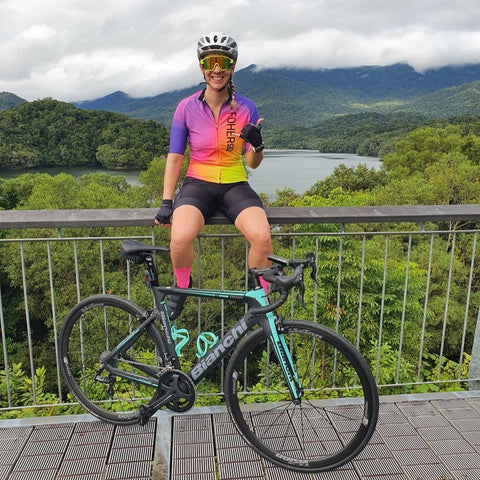
Pic: Finishing an epic climb is always an achievement, living with endo is a whole different challenge.

